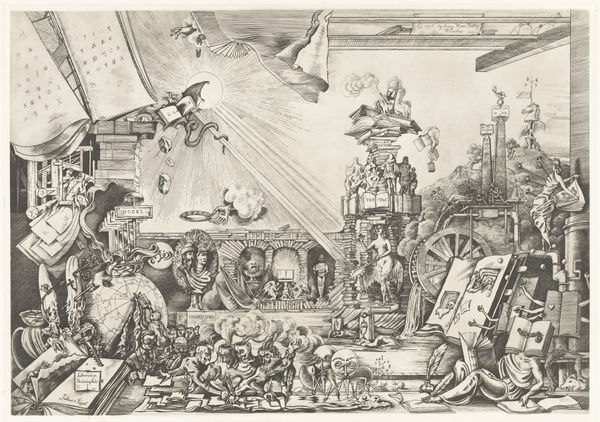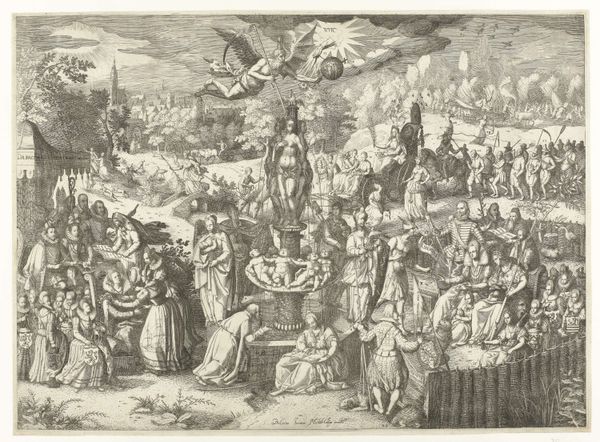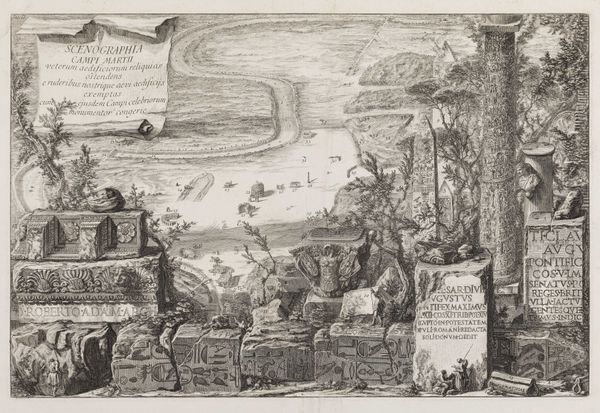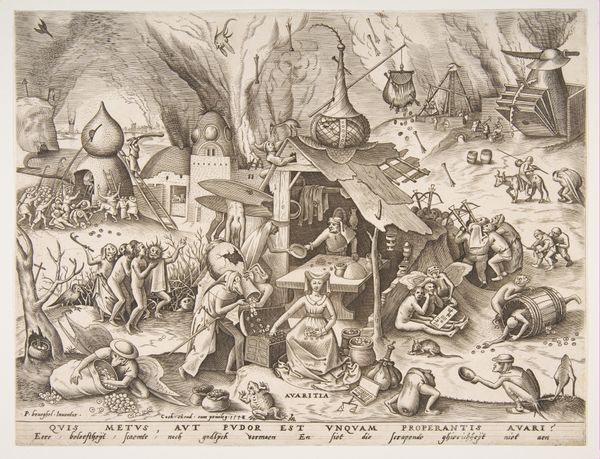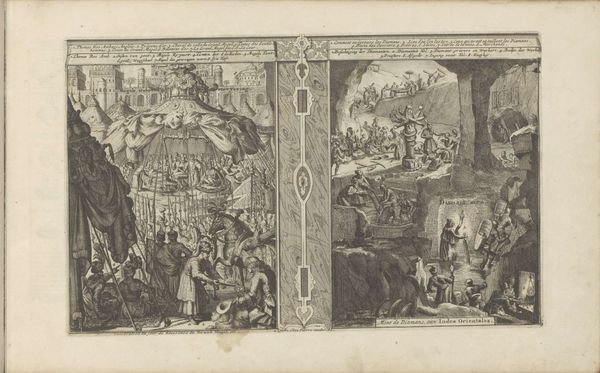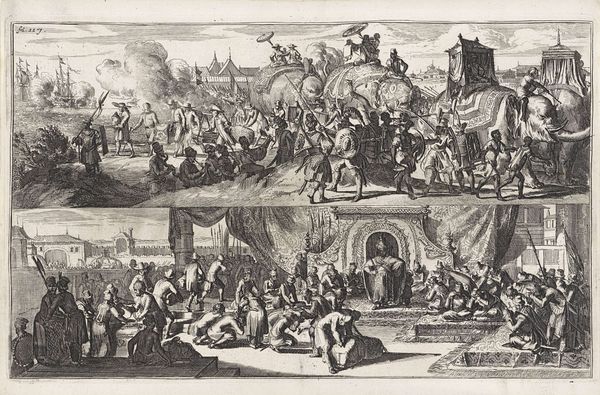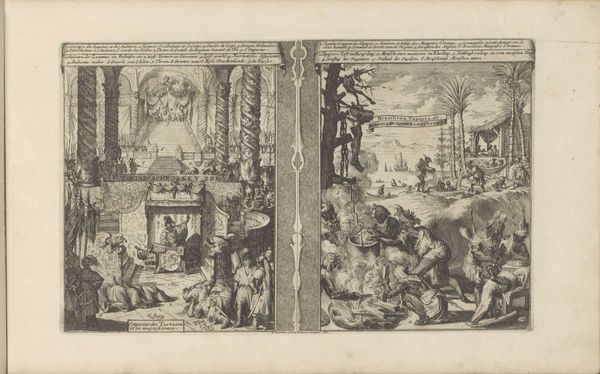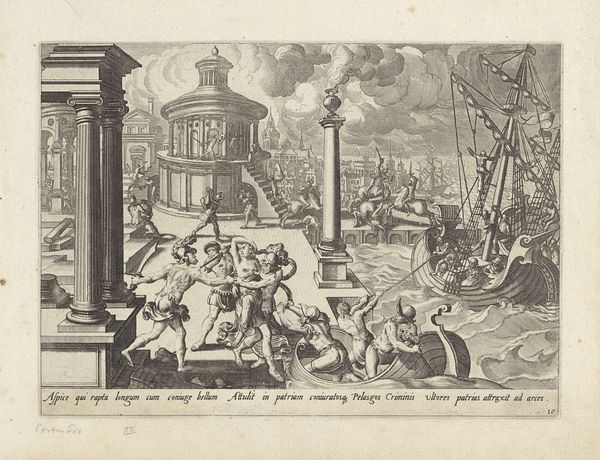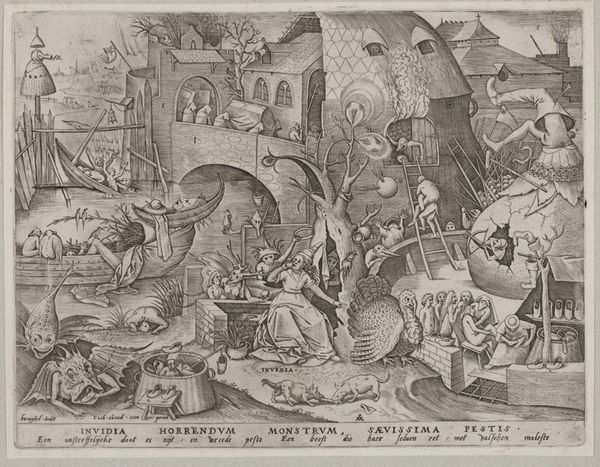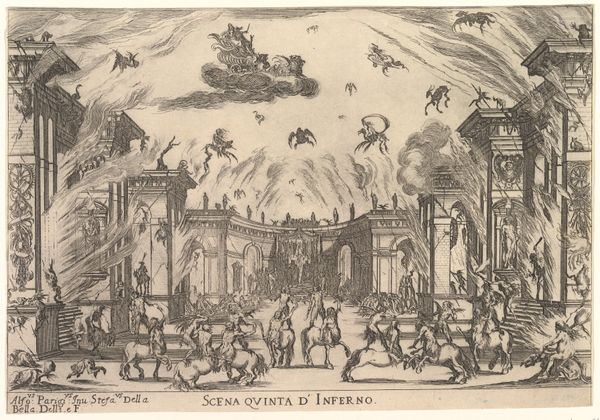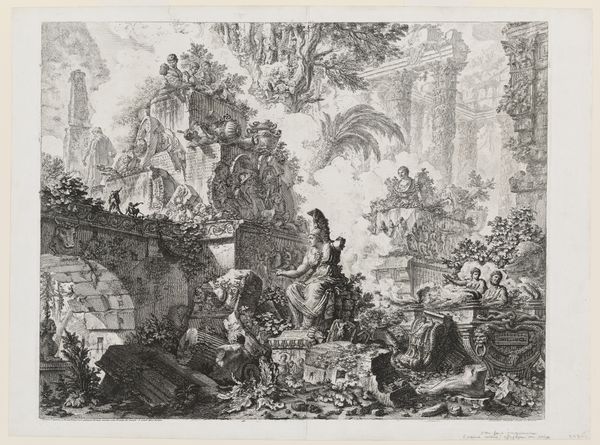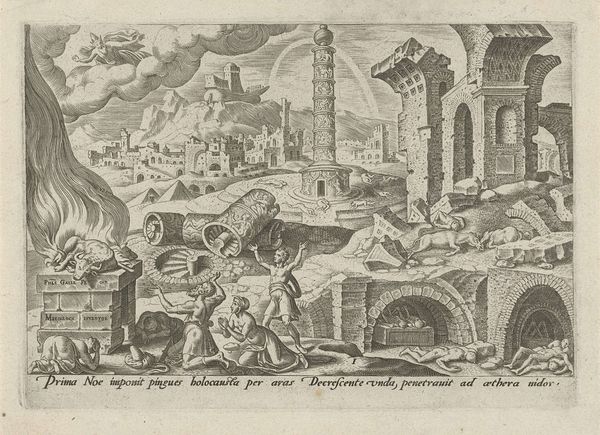
Mannen en vrouwen kijken in de geopende graftombes van historische personen 1655
0:00
0:00
engraving
#
allegory
#
baroque
#
figuration
#
cityscape
#
history-painting
#
engraving
Dimensions: height 316 mm, width 434 mm
Copyright: Rijks Museum: Open Domain
Curator: What a dramatic piece! It gives me the chills just looking at it; the mood is quite haunting, the black ink makes this vision feel ancient and ethereal. Editor: Indeed! Here we have Cornelis van Dalen I's "Mannen en vrouwen kijken in de geopende graftombes van historische personen," an engraving from around 1655, housed here at the Rijksmuseum. It presents such a fascinating exploration into the performance of class and gender during the Baroque Era. Curator: The labor involved in producing these engravings must have been enormous! It makes one consider the socioeconomic dimensions of the workshops during this time, and the artistic contributions made by marginalized labourers in comparison with affluent male patrons. What a process of carefully planned gestures the piece exposes! Editor: Precisely! There's a tension here between mortality and status, the living gaze upon these opened tombs, it evokes themes of historical narrative. In their costumes, do you also see those anxieties and tensions between societal position, the reality of our mortality, and also perhaps a longing to participate in some greater historical or theological drama? Curator: I do! I believe those figures are trapped in a hierarchical power system that normalizes class division. Those are embedded values that the wealthy are both attracted to and terrified of as it concerns death. Editor: And think of the Baroque's own engagement with history, a kind of aesthetic obsession! Here, van Dalen uses the scene as a moral lesson, highlighting the universality of death. Curator: This indeed leaves us in a somber tone...it urges us to understand our material reality and consider the narratives told by and about it in times of social transformation. It forces us to evaluate our contribution to a world that, at times, feels quite bleak. Editor: Absolutely! The work stands as a potent symbol of Baroque reflection. An examination of social hierarchies and mortality told by labour and material reality.
Comments
No comments
Be the first to comment and join the conversation on the ultimate creative platform.

